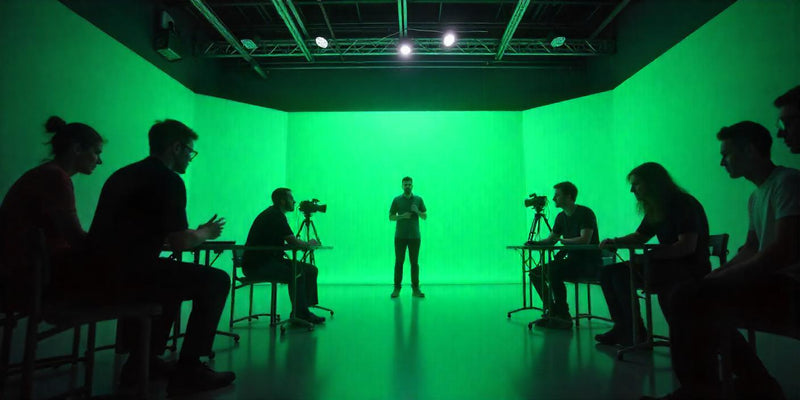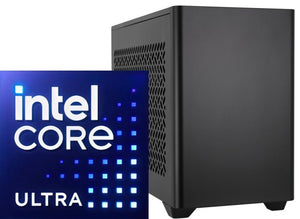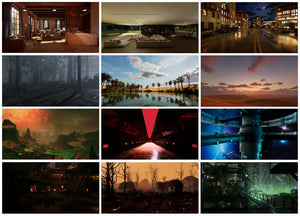University Virtual Production Studio Setup Guide

Introduction
Creating a university virtual production studio has become essential for modern film education programs seeking to prepare students for the industry's technological evolution. As traditional filmmaking methods integrate with cutting-edge digital workflows, educational institutions must adapt their facilities to provide hands-on experience with professional-grade virtual production technologies.
This guide provides detailed planning, implementation, and operational strategies for establishing a comprehensive educational virtual production facility that serves both pedagogical objectives and industry preparation goals. From initial space planning to advanced equipment integration, we'll cover every aspect of building a studio that positions your institution at the forefront of film education.
Understanding Virtual Production Technology for Educational Settings
Virtual production represents a fundamental shift in how films are created, combining real-time computer graphics with traditional cinematography techniques. For universities, this technology offers unprecedented opportunities to teach students complex production concepts within controlled, repeatable environments.
The core components of a university virtual production studio include LED wall systems, camera tracking technology, real-time rendering engines, and sophisticated lighting control systems. Unlike traditional film sets that require extensive location work and post-production processing, virtual production enables students to see final composite imagery in real-time during filming.
Modern film school technology implementations focus on creating learning environments where students can experiment with lighting, camera movement, and visual effects without the typical constraints of budget and time limitations. This approach allows for iterative learning where students can immediately see the results of their creative decisions.
The educational value extends beyond technical skill development. Students gain practical experience with industry-standard workflows, learn to collaborate with technical specialists, and develop problem-solving skills essential for modern film production careers.

Essential Equipment and Technology Components
LED Wall Systems and Display Technology
The foundation of any virtual production studio lies in its LED wall configuration. For educational environments, consider modular LED panels that offer flexibility for different classroom configurations and project requirements. High-resolution panels with fine pixel pitch ensure crisp imagery that maintains quality even when students work close to the displays.
Panel brightness capabilities should support various lighting scenarios, from intimate dialogue scenes to high-energy action sequences. Color accuracy becomes critical when teaching color theory and cinematography fundamentals, requiring displays that can reproduce industry-standard color spaces.
Consider panels with front-service capabilities for easier maintenance in educational settings where access might be limited. Curved panel options provide opportunities to teach students about different stage configurations and their impact on visual storytelling.
Camera Tracking and Motion Capture Systems
Precision camera tracking forms the backbone of virtual production workflows. Educational installations benefit from systems that balance professional capabilities with user-friendly interfaces suitable for student operation.
Optical tracking systems provide high accuracy for complex camera movements, while mechanical tracking offers reliable performance for standard shots. Hybrid systems combining both approaches give students experience with different tracking methodologies used throughout the industry.
Integration with real-time rendering engines requires careful consideration of data flow and latency issues. Students learn to troubleshoot tracking problems, calibrate systems, and optimize performance - skills directly applicable to professional environments.
Real-Time Rendering and Graphics Processing
The graphics processing infrastructure determines the visual quality and complexity of virtual environments your students can create. Professional-grade GPUs configured in scalable arrays provide the computational power necessary for high-resolution, real-time rendering.
Rendering software selection impacts both educational outcomes and industry preparation. Unreal Engine, Unity, and other professional platforms offer educational licenses while providing students with marketable skills.
Storage solutions must accommodate large 3D asset libraries, student project files, and collaborative workflows. Network-attached storage systems with redundancy protect student work while enabling shared access to resources.

Space Planning and Facility Design
Studio Layout and Dimensions
Effective campus LED studio design balances technical requirements with educational functionality. Ceiling heights must accommodate both lighting equipment and student movement, while floor space needs to support various shooting configurations.
Consider the relationship between the LED wall, camera positions, and talent areas. Students need adequate space to practice different shot types while maintaining proper distances for optimal LED wall performance.
Separate areas for equipment storage, control rooms, and preparation spaces enhance the educational experience by providing realistic production environments. Climate control systems become critical for maintaining optimal LED panel performance and student comfort during extended sessions.
Technical Infrastructure Requirements
Power distribution systems must handle the substantial electrical loads of LED walls, lighting equipment, and processing hardware. Redundant power supplies protect against equipment damage and ensure continuous operation during educational sessions.
Network infrastructure supporting high-bandwidth data transfer between cameras, tracking systems, and rendering engines requires careful planning. Fiber optic connections provide the speed and reliability necessary for professional-quality virtual production workflows.
Acoustic treatment serves dual purposes: reducing external noise interference and creating controlled audio environments for teaching sound design and recording techniques.
Implementation Strategies for Academic Programs
Curriculum Integration and Course Development
Successful virtual production education requires thoughtful integration with existing film curriculum rather than isolated technical training. Courses should blend traditional cinematography principles with virtual production techniques, helping students understand how technology enhances rather than replaces fundamental storytelling skills.
Progressive skill development begins with basic concepts like camera operation and lighting in virtual environments, advancing to complex productions involving real-time compositing and interactive elements. Students benefit from hands-on projects that simulate professional production scenarios.
Interdisciplinary collaboration opportunities connect film students with computer science, engineering, and design programs. These partnerships reflect real-world production environments where technical and creative professionals work together.
Faculty Training and Support Systems
Instructor preparation becomes crucial for effective virtual production education. Faculty need training on both technical operation and pedagogical approaches for teaching complex, rapidly evolving technologies.
Ongoing support systems help instructors stay current with software updates, new techniques, and industry developments. Partnerships with technology vendors can provide training resources and technical support.
Documentation and resource libraries enable consistent instruction across different faculty members and course sections. Standardized procedures ensure students receive comprehensive training regardless of instructor.

Cost Analysis and Budget Planning
Initial Investment Considerations
Academic film programs require careful financial planning when implementing virtual production facilities. LED wall costs vary significantly based on size, resolution, and feature sets, typically representing the largest single expense.
Supporting equipment including cameras, lenses, tracking systems, and processing hardware adds substantial costs. However, economies of scale and educational discounts can reduce overall investment requirements.
Facility preparation costs including electrical work, climate control, and acoustic treatment should be factored into initial budgets. These infrastructure investments provide long-term benefits extending beyond virtual production applications.
Ongoing Operational Expenses
Maintenance contracts for LED panels and technical equipment ensure reliable operation throughout academic years. Preventive maintenance schedules minimize downtime and extend equipment life.
Software licensing fees for rendering engines, tracking systems, and creative applications represent ongoing expenses. Educational licenses often provide significant savings compared to commercial rates.
Staff training and certification costs maintain instructor expertise as technology evolves. Professional development investments ensure curriculum remains current with industry practices.
Return on Investment and Value Creation
Virtual production capabilities enhance institutional reputation and student recruitment efforts. Prospective students increasingly seek programs offering hands-on experience with cutting-edge technology.
Industry partnerships facilitated by advanced facilities create opportunities for sponsored projects, internships, and job placement. These relationships provide direct value to students while supporting program sustainability.
Grant opportunities from government agencies and private foundations often prioritize educational technology initiatives. Well-planned virtual production facilities can attract external funding for program expansion.
Student Training and Educational Outcomes
Skill Development Pathways
Structured learning progressions guide students from basic technical competency to advanced creative applications. Initial training focuses on safety protocols, equipment operation, and fundamental workflows.
Intermediate skills include pre-visualization techniques, asset creation, and collaborative production management. Students learn to work effectively in team environments while developing individual specializations.
Advanced training prepares students for immediate industry employment through realistic project experiences and professional workflow simulation. Capstone projects demonstrate comprehensive skill development and creative problem-solving abilities.
Assessment and Evaluation Methods
Practical demonstrations provide effective assessment tools for technical skills while portfolio development showcases creative growth. Students document their learning through project reflections and peer evaluations.
Industry mentor involvement in assessment processes ensures educational outcomes align with professional expectations. Guest critics from production companies provide valuable feedback and networking opportunities.
Certification programs through industry partners validate student competencies and enhance employment prospects. Recognized credentials demonstrate program quality to potential employers.

Technology Integration and Workflow Optimization
Software and Hardware Compatibility
System integration requires careful attention to compatibility between different technology components. Camera systems must communicate effectively with tracking hardware and rendering software.
Standardized file formats and protocols ensure smooth data transfer between different stages of the production pipeline. Students learn industry-standard practices while avoiding technical complications.
Backup systems and redundancy measures protect against equipment failures during critical learning moments. Multiple pathway configurations allow continued operation even when primary systems require maintenance.
Performance Optimization Techniques
Real-time rendering optimization becomes essential for maintaining interactive frame rates during educational sessions. Students learn to balance visual quality with system performance requirements.
Asset optimization techniques help students create efficient 3D models and textures that perform well in real-time environments. These skills translate directly to professional production requirements.
Workflow optimization strategies reduce setup times and improve educational efficiency. Streamlined procedures allow more time for creative work and less time on technical troubleshooting.
Industry Partnerships and Professional Development
Collaboration with Production Companies
Strategic partnerships with local production companies provide students with industry exposure and practical experience. These relationships often lead to internship opportunities and job placements.
Guest speaker series featuring industry professionals expose students to current practices and emerging trends. Real-world insights complement academic instruction with practical perspectives.
Sponsored projects allow students to work on actual productions while gaining academic credit. These experiences provide portfolio material and professional references.
Equipment Vendor Relationships
Partnerships with equipment manufacturers can provide educational discounts, training resources, and technical support. These relationships benefit both institutions and vendors through workforce development.
Beta testing opportunities allow students to work with cutting-edge technology before general release. Early exposure to new tools provides competitive advantages in the job market.
Technical support relationships ensure rapid resolution of equipment issues that could disrupt educational activities. Vendor partnerships often include training for faculty and technical staff.
Future-Proofing and Scalability Planning
Technology Evolution Considerations
Rapid technological advancement requires flexible infrastructure that can accommodate future upgrades. Modular designs allow incremental improvements without complete system replacement.
Emerging technologies like extended reality (XR) and artificial intelligence integration will likely impact virtual production workflows. Educational facilities should plan for these developments.
Industry standard evolution requires ongoing curriculum updates and equipment upgrades. Successful programs maintain relevance through continuous adaptation to technological change.
Expansion and Growth Strategies
Successful programs often require expansion to meet growing demand and evolving educational needs. Initial installations should consider future growth potential.
Multi-purpose facility design maximizes utilization while providing flexibility for different course requirements. Shared resources reduce costs while increasing access opportunities.
Satellite facility development can extend virtual production education to multiple campus locations or partner institutions. Distance learning integration expands program reach beyond traditional boundaries.
Maintenance and Support Systems
Preventive Maintenance Protocols
Regular maintenance schedules prevent equipment failures and extend operational life. LED panels require specific cleaning procedures and environmental monitoring.
Calibration procedures ensure consistent performance across different system components. Color accuracy and tracking precision require regular verification and adjustment.
Documentation systems track maintenance activities, equipment performance, and replacement schedules. These records support budget planning and warranty claims.
Technical Support Infrastructure
On-site technical support capabilities reduce downtime and maintain educational continuity. Trained staff can handle routine maintenance and basic troubleshooting.
Remote support agreements with vendors provide expert assistance for complex technical issues. These partnerships ensure rapid problem resolution when local expertise is insufficient.
Spare parts inventory management balances cost control with operational reliability. Critical components should be readily available to minimize disruption to educational activities.
Conclusion
Establishing a successful university virtual production studio requires careful planning, substantial investment, and ongoing commitment to technological advancement. However, the educational benefits and industry preparation value justify these investments for forward-thinking academic programs.
The key to success lies in balancing technical capabilities with educational objectives, ensuring that sophisticated technology serves pedagogical goals rather than overwhelming them. Students who gain hands-on experience with virtual production technologies graduate with highly marketable skills and deep comprehension of modern filmmaking processes.
Successful implementation depends on strong industry partnerships, comprehensive faculty training, and flexible infrastructure that can adapt to rapidly evolving technology. Institutions that commit to these requirements position themselves as leaders in film education while providing students with unparalleled preparation for professional careers.
The investment in virtual production education pays dividends through enhanced student outcomes, stronger industry relationships, and institutional reputation. As the film industry continues its digital transformation, universities with comprehensive virtual production capabilities will attract top students and faculty while maintaining relevance in an increasingly competitive educational landscape.
Frequently Asked Questions
Q: What is the minimum space requirement for a university virtual production studio?
A: A functional virtual production studio typically requires at least 2,000 square feet, with minimum ceiling heights of 16 feet. This allows for a 20-foot LED wall, adequate camera movement space, and necessary technical equipment. Larger facilities (3,000+ square feet) provide more flexibility for complex productions and multiple simultaneous classes.
Q: How much does it cost to set up a basic university virtual production studio?
A: Initial setup costs typically range from $500,000 to $2 million, depending on LED wall size, resolution, and supporting equipment. This includes LED panels ($200,000-$800,000), cameras and tracking systems ($50,000-$150,000), processing hardware ($100,000-$300,000), and facility preparation ($100,000-$400,000). Ongoing operational costs add $50,000-$150,000 annually.
Q: What software platforms are most commonly used in educational virtual production? A: Unreal Engine dominates educational virtual production due to its free educational licensing and industry adoption. Unity provides an alternative with strong educational support. Professional tracking software like Mo-Sys or Stype integrates with these platforms. Many institutions also use Blender for 3D asset creation and DaVinci Resolve for post-production workflows.
Q: How do universities typically fund virtual production studio projects?
A: Funding sources include capital equipment budgets, educational technology grants, industry partnerships, and donor contributions. Federal grants through NSF or NEA support innovative educational technology projects. Private foundations often fund programs linking technology with creative education. Industry partnerships can provide equipment donations or favorable financing terms.
Q: What are the most important considerations for faculty training in virtual production?
A: Faculty training should cover technical operation, pedagogical approaches, and industry workflow integration. Hands-on workshops with equipment vendors provide essential technical skills. Collaboration with industry professionals offers practical insights into professional workflows. Ongoing training programs help faculty stay current with rapidly evolving technology and maintain relevance with industry practices.
Q: How do students typically progress through virtual production education programs?
A: Progression typically follows a three-stage model: foundational skills (equipment operation, safety, basic workflows), intermediate applications (pre-visualization, collaborative production, asset creation), and advanced practice (complex projects, industry collaboration, specialization development). Capstone projects demonstrate comprehensive competency and provide portfolio materials for job applications.
Q: What career opportunities exist for students trained in virtual production?
A: Career paths include virtual production supervisor, real-time technical director, pre-visualization artist, virtual cinematographer, LED wall technician, and virtual production coordinator. Graduates also pursue roles in traditional film production, gaming, broadcast television, and emerging media. The interdisciplinary nature of virtual production creates opportunities across multiple entertainment industry sectors.
Q: How do universities measure the success of their virtual production programs?
A: Success metrics include student job placement rates, industry feedback, project portfolio quality, and program enrollment growth. Graduate employment in relevant fields within six months of graduation provides key success indicators. Industry partnerships and sponsored projects demonstrate program relevance and quality. Student satisfaction surveys and alumni feedback guide program improvements.
Q: What are the biggest challenges universities face when implementing virtual production studios?
A: Major challenges include high initial costs, rapid technology evolution, faculty training requirements, and curriculum integration complexity. Technical support needs often exceed initial planning estimates. Balancing educational objectives with professional training goals requires careful planning. Maintaining equipment currency with industry standards demands ongoing investment and adaptation.
Q: How can smaller universities with limited budgets approach virtual production education?
A: Smaller institutions can start with scaled-down LED wall configurations or partnership arrangements with larger facilities. Mobile or modular systems provide flexibility while reducing initial costs. Consortium approaches allow multiple institutions to share resources and expertise. Industry partnerships can provide access to professional facilities for student projects and training experiences.




